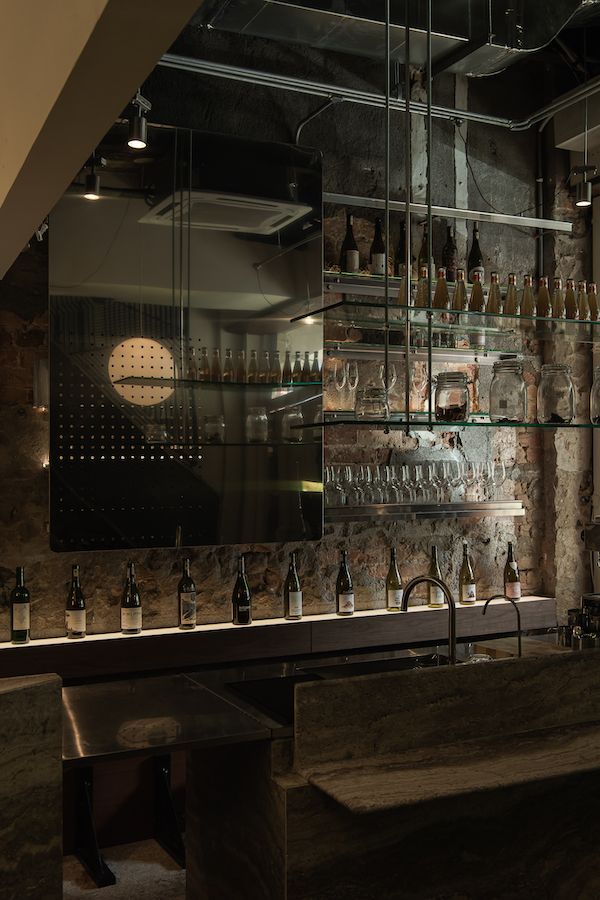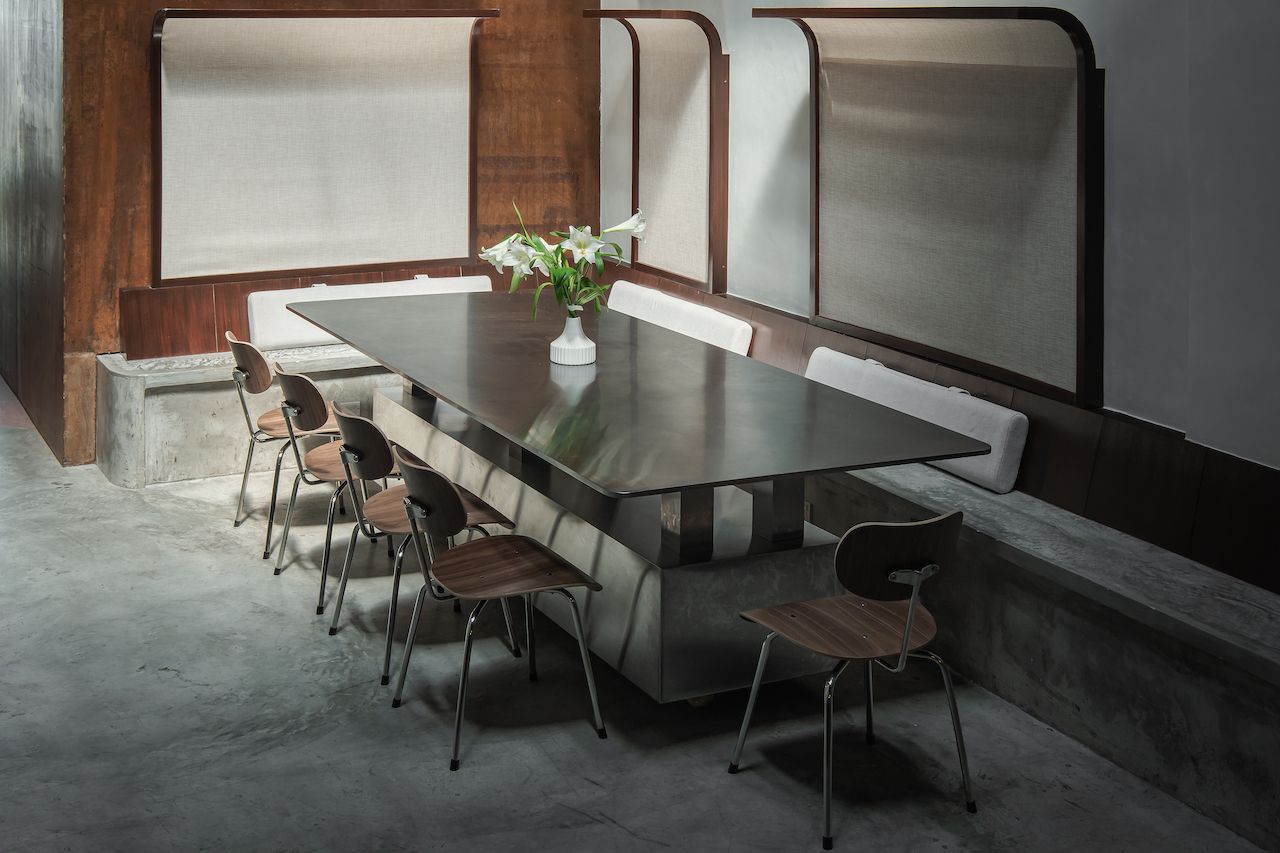Small but perfectly formed, Small Shifting Space is Petaling Street's hippest resto-bar and Wunderwall Design’s ode to the past, present and future
Once seedy and ramshackle, Petaling Street, or commonly known as Chinatown, today has become home to some of the city’s most design-forward spaces. Chief among them is Wunderwall Design’s Small Shifting Space (SSS), a two-storey heritage shophouse dedicated to a chef-driven kitchen, natural wines and community events.
With its reflective façade, SSS is an eye-catching landmark whose design concept evolved through discussions with Ejin Sha of Studio Ejin Sha, who was handling the branding.
See also: Home Tour: A Beautifully Restored Peranakan Shophouse In George Town, Penang

“Through conversations, a few keywords were identified: plurality, progressiveness, experimental, past, present and future. These keywords informed our design in terms of configuration, materials and detailing, and is the main core behind SSS,” states Wil Ken, one of the founders of Wunderwall Design.




